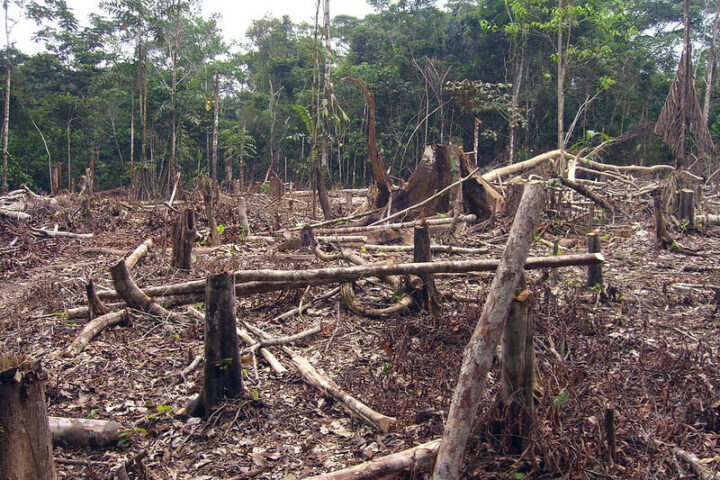Google has made it their goal to help build a more sustainable future ever since its foundation. Sharing what Google has learned along the road, as well as being open about its progress and issues, are critical components of this. This is especially true considering how serious the situation is, which is defined by the necessity for an energy transition and the convergence of technical advancement.
Google’s annual Environmental Report closely examines the company’s efforts to employ technology, particularly artificial intelligence (AI), to drive positive environmental change and operate a sustainable business.
Google understands that growing AI and applying it to advance climate action is equally important as addressing its environmental impact. To assist in reducing their ecological impact, they’ve constructed world-class AI infrastructure, namely Trillium, the sixth-generation Tensor Processing Unit (TPU), which happens to be 67% more energy efficient than TPU v5e. They’ve also found tried-and-true approaches that, according to research, when combined, may decrease the energy necessary to train a model created by AI by up to 100 times while lowering related greenhouse gases by up to 1,000 times. All of these practices are currently employed at Google.
Google strives to create the world’s most energy-efficient computing infrastructure, which is supported by responsible water usage policies and a dedication to waste minimization. In 2023, the data centers’ average yearly power use effectiveness was 1.10, compared to the industry average of 1.58, implying that they consumed almost 5.8 times fewer resources energy per unit of IT equipment energy.
Last year, Google created a water risk methodology to help identify climate-conscious cooling solutions that take into account carbon-free energy (CFE) availability, watershed health, and future water needs. They see the expanding infrastructure as a chance to spur the technologies and investments required to fuel a low-carbon economy. AI has great potential to push climate action. Indeed, AI has the potential to help reduce 5-10% of global greenhouse gas (GHG) emissions by 2030.
Google is increasing climate action with AI in three major areas:
- Organizing information: Fuel-efficient routing employs artificial intelligence to analyze traffic, geography, and a vehicle’s engine to provide the most economical route. It is anticipated to have contributed to over 2.9 million metric tons of GHG emissions reductions between the feature’s launch in late 2021 and the end of 2023, which is comparable to keeping around 650,000 fuel-powered automobiles off the road for a year.
- Improving prediction: They created a groundbreaking worldwide hydrological AI model and coupled it with publicly available data sources to forecast floods up to seven days in advance in over 80 nations. This includes regions with over 460 million people, assisting these communities in preparing for and responding to riverine floods.
- Better optimization: Green signal is an AI-powered technology that assists city traffic engineers in optimizing traffic signal time to reduce stop-and-go traffic and fuel usage. This device has the potential to reduce stops by up to 30% while reducing emissions by up to 10% at junctions.
How they’re promoting sustainability throughout the operations:
- Google became the first big firm to match 100% of the global yearly electricity use with renewable energy in 2017, a feat they have maintained year after year. Building on the past two decades of achievement, they will undertake their third decade of climate action in 2020, the most ambitious yet. They have a lofty aim of achieving net-zero emissions throughout all of their activities and value chain by 2030, which is supported by a commitment to run on 24/7 CFE on every grid where they operate. They’re also aiming to improve water stewardship, create a circular economy, and restore and enhance nature and biodiversity. This year’s report demonstrates how they continue to make progress in each of these areas:
- Ten of the grid regions achieved at least 90% CFE, and despite increased overall electrical load across the data centers they operate, maintained a global average of 64% CFE. They also commemorated a first-of-its-kind improved geothermal project that now provides CFE to the grid.
- They made contracts to purchase about four gigawatts of clean energy generation capacity in Texas, Belgium, and Australia, more than in any previous year.
- They implemented a Google Renewable Energy Addendum that asks a major hardware production suppliers, based on spend, to commit to attaining a 100% renewable energy match by 2029.
- The water stewardship initiatives refilled a projected 1 billion gallons of water, which accounts for 18% of 2023 freshwater use, and increased their replenishment progress from 6% in 2022.
- New Google products released and produced in 2023 had packaging that was more than 99% plastic-free. Furthermore, the Pixel 8 and Pixel 8 Pro are packaged with 100% plastic-free materials
Similar Posts
The ongoing work to build a sustainable future: Despite their accomplishments, they still confront substantial problems that they are aggressively addressing. In 2023, their total GHG emissions grew 13% year on year, owing mostly to rising data center energy use and supply chain emissions. While they pioneered renewable energy on many of the grids in which they function, there are still some difficult-to-decarbonize regions, such as Asia-Pacific, where CFE is not widely available.
Furthermore, they frequently observe lengthier lead times between initial investments and the building of sustainable energy projects, as well as the GHG reductions that occur. To accelerate progress toward a low-carbon economy, they recently announced a clean transition rate, which brings customers and utilities together to promote new clean energy projects in the United States, as well as an investment to enable 1 gigawatt of new solar capacity in Taiwan.
A sustainable future necessitates system-wide reform, strong government policies, and innovative technologies. They are devoted to working together and contributing at all stages.








